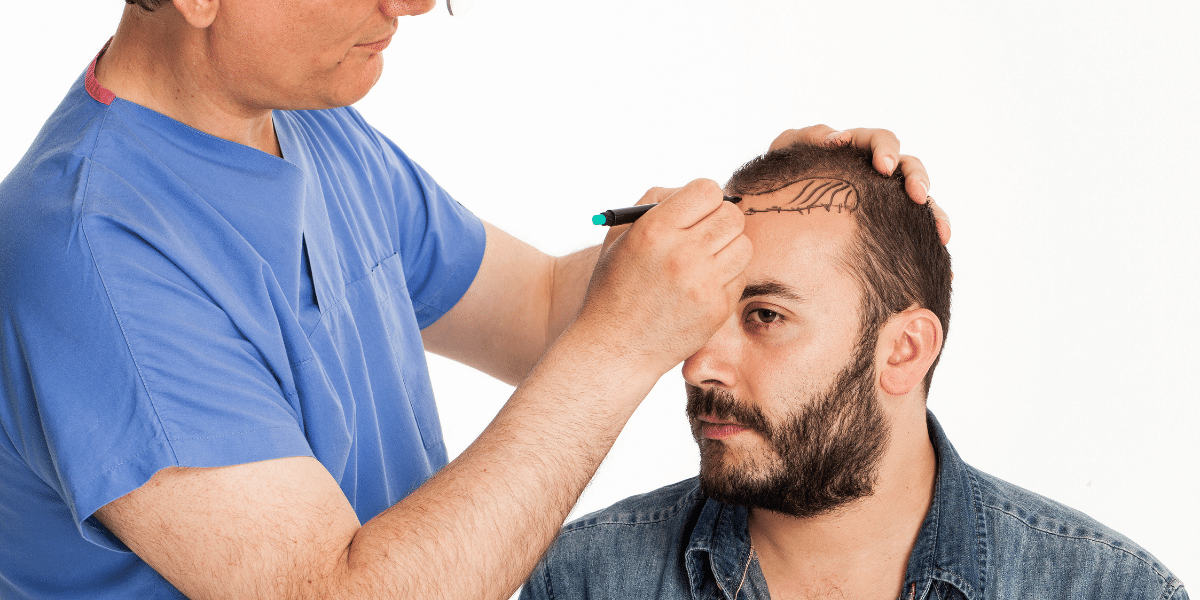A hair transplant can be a life-changing procedure for individuals suffering from hair loss. If you're considering a hair transplant in Riyadh, it's essential to understand the process from start to finish. Here's a step-by-step guide to help you navigate your hair transplant journey:
1. Initial Consultation

- Hair Loss Assessment: The surgeon will evaluate the extent and pattern of your hair loss.
- Donor Area Evaluation: The quality and quantity of hair in your donor area, typically the back of your head, will be assessed.
- Treatment Plan: The surgeon will discuss the most suitable hair transplant technique (FUE, FUT, or DHI) and create a personalized treatment plan.
- Cost and Financing: You'll be informed about the estimated cost of the procedure and any financing options available.
2. Pre-Operative Preparation
- Medical Examination: You may undergo a medical examination to assess your overall health and identify any potential contraindications.
- Blood Tests: Blood tests may be required to check for any underlying health conditions.
- Medication Review: Inform your surgeon about any medications you're currently taking, including prescription and over-the-counter drugs.
- Hair Length: Your surgeon may recommend a specific hair length for the donor and recipient areas.
3. The Hair Transplant Procedure
FUE (Follicular Unit Extraction):
- Local Anesthesia: The donor area is numbed with local anesthesia.
- Follicle Extraction: Individual hair follicles are extracted one by one using a specialized tool.
- Recipient Site Creation: Tiny incisions are made in the balding area to create recipient sites for the extracted follicles.
- Follicle Implantation: The extracted follicles are carefully implanted into the recipient sites.
FUT (Follicular Unit Transplantation):
- Strip Removal: A strip of skin containing hair follicles is removed from the donor area.
- Follicle Dissection: The strip is dissected into individual follicular units.
- Recipient Site Creation: Tiny incisions are made in the balding area to create recipient sites.
- Follicle Implantation: The dissected follicular units are implanted into the recipient sites.
DHI (Direct Hair Implantation):
- Follicle Extraction: Individual hair follicles are extracted using a specialized tool.
- Direct Implantation: The extracted follicles are directly implanted into the recipient area without the need for creating separate incisions.
4. Post-Operative Care
- Medication: You may be prescribed medication to manage pain and reduce inflammation.
- Hair Washing: You'll receive specific instructions on how to wash your hair gently to avoid damaging the transplanted grafts.
- Scalp Protection: You'll need to protect your scalp from direct sunlight, wind, and extreme temperatures.
- Avoid Strenuous Activity: Avoid strenuous physical activity, heavy lifting, and intense workouts for a certain period.
- Follow-Up Appointments: Attend regular follow-up appointments with your surgeon to monitor your progress and address any concerns.
5. Healing and Results
- Initial Healing: The transplanted area may experience some swelling, redness, and scabbing.
- Hair Shedding: A few weeks after the surgery, you may experience hair shedding. This is a normal part of the healing process.
- New Hair Growth: New hair growth will gradually start to appear in the transplanted area.
- Final Results: The final results of a hair transplant are usually visible within 12-18 months.
By following these steps and choosing a reputable clinic in Riyadh, you can increase your chances of a successful hair transplant and achieve a natural-looking result. Remember to consult with an experienced hair transplant surgeon to discuss your specific needs and expectations.












